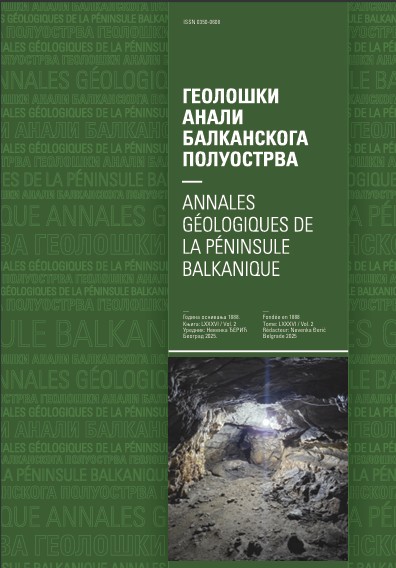Spectroscopic study of barite from the Kremikovtsi Deposit (Bulgaria) with implication for its origin
Abstract
Different genetic types (endogene and supergene) of barite from the Kremikovtsi deposit (Bulgaria) were studied by Laser-induced time-resolved luminescence (LITRL), Infrared (IR) and Raman spectroscopy. The IR spectra of the endogene barites are quite similar to those reported in the literature and do not show appreciable differences among them. The IR spectra of the supergene barites are almost identical to those of the endogene ones in respect to the positions of the vibrational modes ν1, ν2 and ν4 of SO4 2 except for a shift of 3 cm-1 for the ν 3 band. They displayed a presence of additional bands, which are close to the ν3 and ν1 modes of CO3 2- in calcite. The Raman studies support the suggestion that the supergene barite contains traces of calcite. The modern LITRL technique allowed the detection of several luminescent centers in the endogene barite. Eu3+ luminescence was identified for the first time in barite. The different emission spectra at 266 and 532 nm excitations suggest there are at least 2 structural positions for Eu3+ in the barite crystal lattice. The luminescent spectra also revealed a rather unusual violet-blue Nd3+ emission, which usually occurs in the IR spectral range, as well as emissions of Ce3+, Eu2+, Tb3+, Ag+, Sn2+(?) and UO2 2+. The oxidation state of cations isomorphically present in the barite crystal lattice suggests the endogene barite in the Kremikovtsi deposit precipitated from reduced fluids supposedly subjected to cooling (conductive/convective) and oxidation (mixing with seawater).
Copyright (c) 2006 Geološki anali Balkanskoga poluostrva

This work is licensed under a Creative Commons Attribution 4.0 International License.










